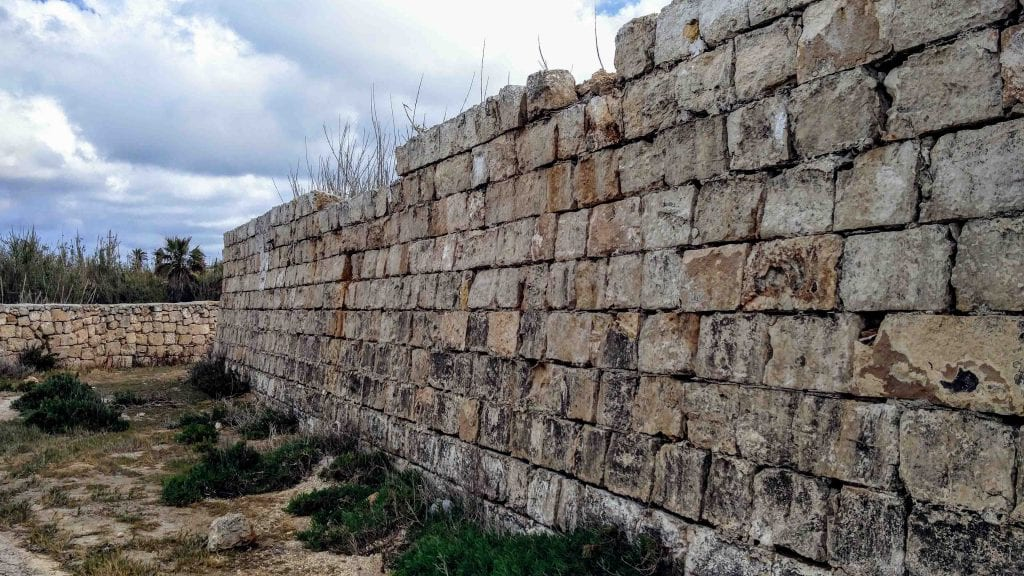The state of this redoubt
The state of this redoubt is disastrous, because only part of the parapet wall exists today. It was destroyed during a time when there was no national conscience about the conservation of our national heritage. The redoubt had to be demolished to build the nearer hotel. Anyone passing from the vicinity has to keep attention to see these remains, because they look like a rubble wall.
Tal-Bir Redoubt was a fortification built at Marfa between the Wied Musa and Vendome Batteries. Its location was ideal to resist any attempt of disembarkation in this area, where the artillery of the mentioned batteries could not defend.
The redoubt was built from 1715-16 and costed some 1213.8.4.3 scudi. It was similar to the other redoubt built on the coast facing Comino. It consisted of a pentagonal platform surrounded by a low parapet and at the middle of the rear there was a rectangular blockhouse. 1

References:
1 Stephen Spiteri. Fortresses of the Cross: Hospitaller Military Architecture (1136-1798), A Heritage Interpretation Services Publication, Malta, 1994, p 542.
Researched and Written by: Charles Debono B.A.(Hons) History